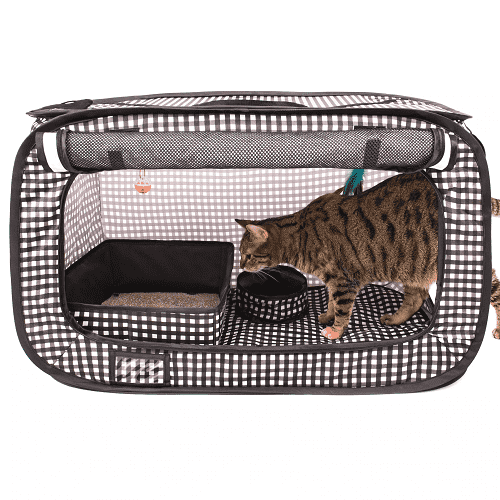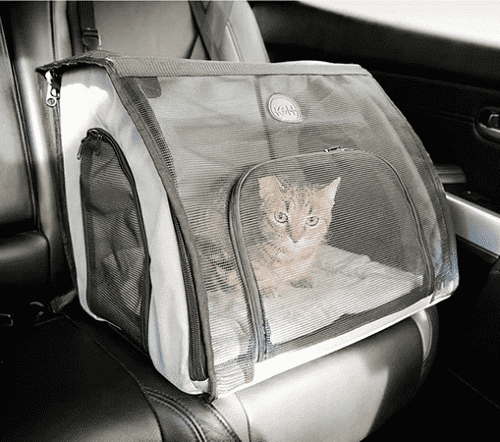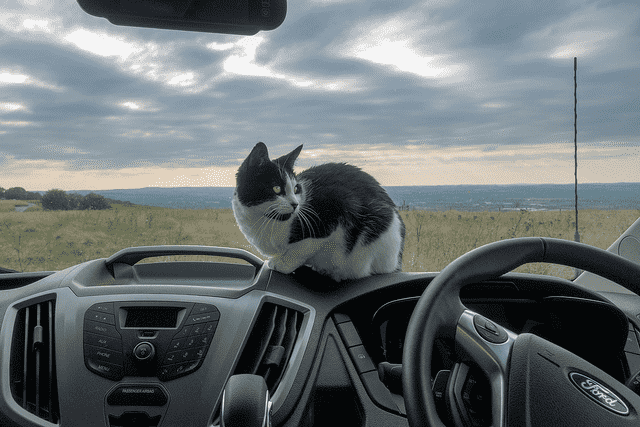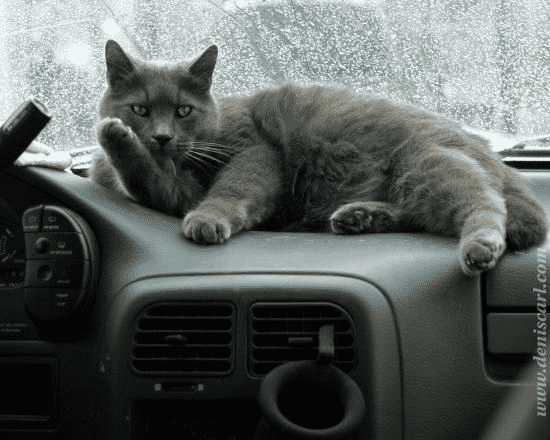At some point, you may need or want to travel somewhere with your cat. This can be a stressful thought but there are things you can do beforehand to reduce the stress of travel for both you and your feline friend.
Getting Ready:
The type of perpetration needed depends on your cat and the type of travel as well as the length of the trip. If flying, call the airline (each may have different requirements) and see the sized carrier you need for under the seat. Check about health certificates and what vaccinations are required. Some airlines have their own forms, others will let you use a standard certificate from your family veterinarian.
Also, when flying, make sure that your cat will be in a temperature and pressure-controlled area – often this means in the passenger area of the plane. Extra caution is needed with breeds like Persians and Himalayans as flat-faced cats cannot handle temperature or pressure changes easily.
If your cat has shown distress during past travels, be sure to talk with your veterinarian about medications that can help during travel. If a health certificate is required, your cat will need a veterinary visit. Discuss the use of medications to help your cat feel more comfortable.

For flights, have the appropriate carrier ready in advance of your trip and start teaching your cat that the carrier is a great place to be. You can purchase a spray of the feline pheromone Feliway, and spray it on the bedding you place inside the carrier.
For long car rides, consider using a large dog crate that can accommodate a small litter box, even a food bowl plus space for your cat to rest comfortably.
If you are flying or using any other public transportation, the size of the carrier will likely be limited. Use a pee pad or a soft towel to line the carrier in case of accidents as well as for comfort. Cats who are accustomed to wearing a harness with a leash and are comfortable in public may be able to take breaks from the carrier during long trips.
Be cautious even when your cat is used to wearing a harness or leash, as some cats may easily startle in a crowded airport or public rest stop.
Getting Your Cat used to the Car

If you are driving, you can acclimate your cat to the carrier as well as the car. Complete the following steps over many trips while offering treats and spray the car down with Feliway. The goal is to help your cat become more relaxed each session
- Once your cat is in their carrier in the car with the carrier door open (car door closed with both of you inside, offer treats.
- Turn on the car and remain parked, feeding your cat treats. This lets your cat acclimate to the engine and other car sounds
- Drive a short distance such as up and down the driveway and over time, around the block. Ideally, a passenger can feed treats during this step
- If your cat remains relaxed, increase the distance for each session.
While not appropriate in a multi-family situation where the car door and/or windows are being opened and closed frequently and by different passengers, if just you and one other adult, some cats enjoy wandering the car while driving and the litter box can be placed in the back or in a hatchback etc.


If you try this, make sure your cat doesn’t get under the driver seat or near the gas and break pedals. This isn’t for every cat or for every owner as there can be risk involved such as your cat jumping out an open car door or getting under or near the gas pedal.
However, if your cat is fairly content to hang out and pursue other areas of the vehicle, it can be a comfortable alternative. I personally have traveled with two cats this way over a 27 hour car drive and had them eat and use the litter box while driving.
Be sure to place the child safety lock on the windows – if your cat steps on a power window button while looking out the window, they can open the windows.
During the Trip
Allow plenty of travel time to avoid added stress for yourself and your cat. Give your cat some time to adjust to the car before you start driving. Bring your cat’s breakfast with you to feed in small portions throughout the trip.
After Arriving

Your cat will need some time to feel comfortable in their new environment. Prepare a room or safe haven area for them so they can relax. Make sure they have everything they need in this space such as a litter box, hiding spot, scratching post, resting area, food and water.
If possible, a plug-in Feliway diffuser can be started 24 hours prior to arrival so the calming pheromone is in the air. Wait to introduce your cat to any other pets in the home until after they have acclimated.


